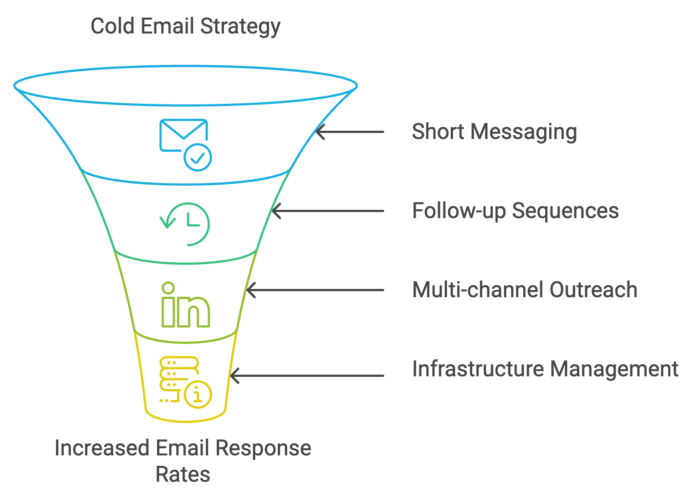
Does cold emailing work?
Cold emailing has evolved and requires a more strategic approach to remain effective. While some claim cold email performance has declined due to tighter regulations, spam filters, and crowded inboxes, it still delivers value when executed correctly.
Cold email campaigns remain cost-effective, scalable, and useful for reaching new prospects—particularly in B2B outreach. However, there are new best practices to follow:
- Personalization and targeting: Simply blasting out generic messages (“spray and pray”) no longer works. Emails tailored to the recipient’s role, industry, or challenges achieve better response rates. Use intend-based or trigger-based targeting to get better results.
- Short, clear messaging: In 2024, brevity is key. Cold emails that are direct, to the point, and focused on solving a recipient’s problem are more likely to succeed.
- Follow-up sequences: Success with cold emails often requires persistence. Campaigns that include 4 to 7 follow-ups have significantly higher reply rates than those with fewer touches.
- Multi-channel outreach: Integrating cold email with LinkedIn or cold calling further enhances effectiveness by engaging prospects through multiple touchpoints.
- Infrastructure and volume management: Sending too many emails from a single mailbox can trigger spam filters. A new trend is to distribute emails across multiple mailboxes to maintain deliverability.
In summary, cold email is still a valuable tool if used strategically, with a focus on personalized outreach, follow-ups, and complementary channels. For those who adapt to the changes, cold emailing continues to offer opportunities for meaningful engagement and lead generation.
